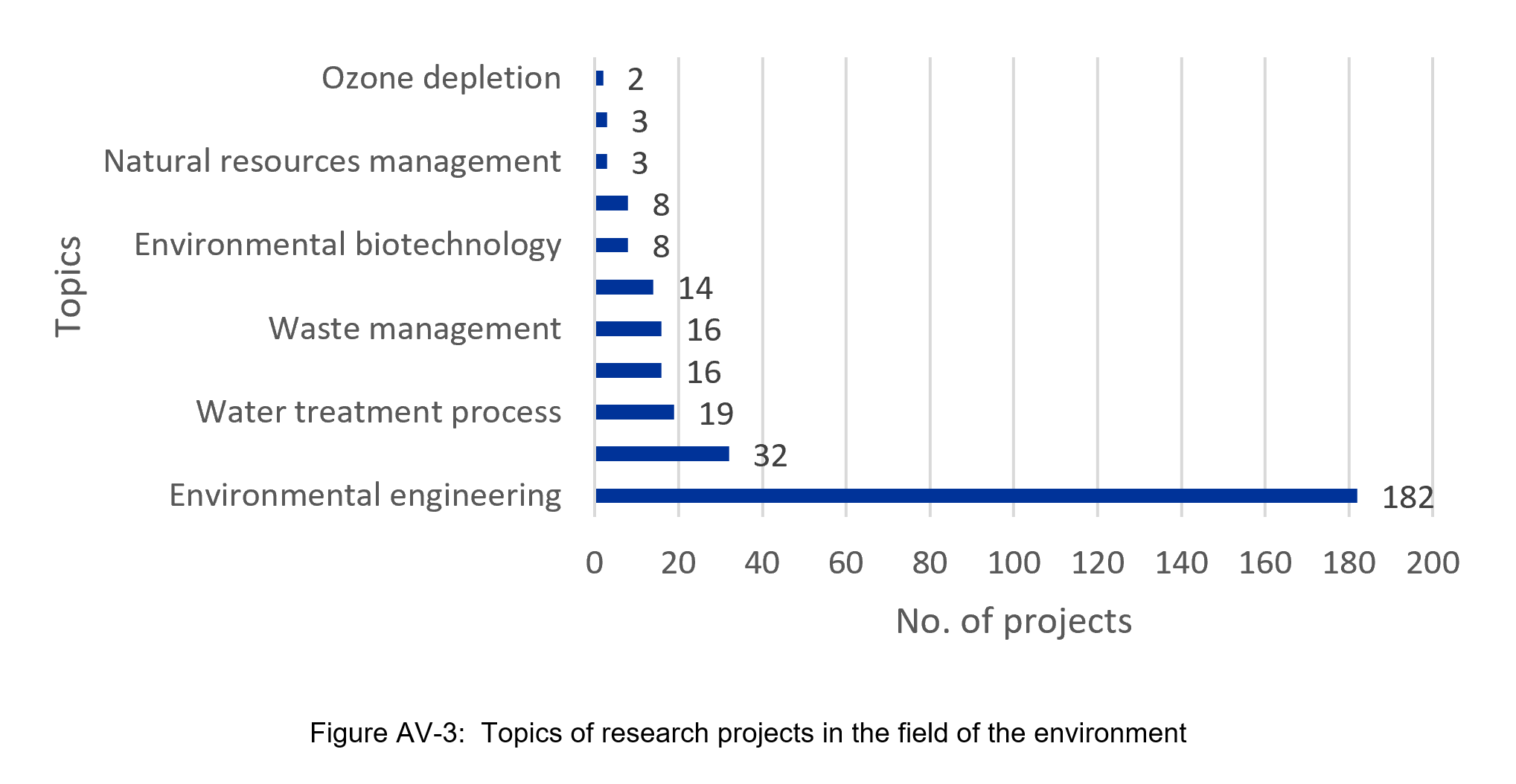R&D - EUON
Environment
This section gives an overview of the Horizon 2020 projects focused on energy. The projects that contained the keyword “environment*” in their subject classification were filtered out from the general collection of nanotechnology projects developed for the study.
In the period 2017-2020, Horizon 2020 funded 215 projects in the field of environment. The environment projects comprised 17% of all research projects in nanotechnology funded by the EU in 2017-2020. In general, it shows that the interest in nanotechnology and the environment was not so high.
Analysis of the start date of environment projects shows that most of them received funding and started in 2017 and 2018. H2020 covered the 2014-2020 period, so with 2017 as a mid-term of the programme, it is not surprising that most projects started during this period. The decreasing number of research projects towards the end of the funding period is explained by the fact that most research projects require several years to complete.

H2020 contained several high-level programmes/priorities/specific actions and their sub-programmes. Three thematic and two horizontal high-level programmes funded nanotechnology research and innovation:
- Priority “Excellent science” (1) aimed to improve the excellence of the European research base and consolidate the European Research Area (ERA) to increase the global competitiveness of European research and innovation.
- Priority “Industrial leadership” (2) focused on boosting the development of the technologies and innovations that will underpin future businesses and help innovative European SMEs to grow into world-leading companies. This priority contained a sub-programme targeted at nanotechnologies.
- Priority “Societal challenges” (3) focused on the societal challenges that were identified in the Europe 2020 strategy and aimed to encourage sufficient research and innovation efforts necessary to cope with these challenges and achieve the EU strategic goals.
- Specific objective “Spreading excellence and widening participation” (4) was a horizontal objective of Horizon 2020 aimed at pooling research and innovation talents in Europe, nurturing and connecting pools of excellence to maximise and fully exploit Europe’s research and innovation potential.
- Specific objective “Science with and for society” (5) was a horizontal objective of Horizon 2020 aimed at strengthening the collaboration between science and society by engaging citizens in science and using collective intelligence for solving research problems, promoting scientific careers, etc.
Each of the described high-level programmes contained the whole hierarchy of sub-programmes. Usually, one project received funding through a combination of programmes. Those combinations of (sub)programmes from 2017-2020 were filtered out. Figure 9 11 gives an overview of programmes and subprogrammes that funded environment research under Horizon 2020.

Between 2017-2020, Horizon 2020 environment research projects were more focused on scientific excellence rather than on industrial innovation. Most environment projects received funding under the priority “Excellent science” and its subprogrammes (105 projects, 49%). These subprogrammes are focused on building the capacity of individual researchers and their teams as well as encouraging collaboration between researchers. Substantially less – 80 projects (37%) were funded under the priority “Industrial leadership” that promoted nanotechnology innovation and commercialisation. Forty-six projects (21%) also focused on the third priority of Horizon 2020 – Societal challenges. Finally, thirteen projects (6%) were focused on the horizontal objective “Spreading excellence and widening participation” and only 3 projects (1%) – on the horizontal objective “Science with and for society”.
According to the project classification applied in Cordis, environment projects focused on eleven topics. One project could combine several topics. In most cases, projects used classes referring to different hierarchical classification levels. For instance, some projects referred to “pollution” in general, while others specified the focus on “air pollution engineering”.

Most projects focused on environmental engineering (182 projects, 85%). Environmental engineering is a branch of engineering focused on protecting human health and the environment.1 It is a general topic that covers various issues, such as waste management, water treatment, air pollution control, etc. Many research projects specified further details as renewable energy (see the details in the thematic report “Energy”). Other topics addressed pollution (32 projects, 15%) and actions to remove pollution or remediate the environment, e.g., water treatment (19 projects, 9%), waste management (16 projects, 7%), air pollution engineering (14 projects, 7%). Other topics, e.g., related to various aspects of climate change received less attention in the research projects. An illustrative example of a project focused on environmental engineering is provided in the table below.
| Table AV-1: An example of a project focused on environmental engineering | |||
|---|---|---|---|
| Project title, acronym, (coordinating country) |
Objectives | Start, end dates | Funding (EU contribution) |
| Hybrid bead adsorbents, Hybead (Spain) | Good water quality and adequate sanitation are considered essential by the UN to combat poverty and promote sustainable living. Insufficient water quality, low sanitation and poor hygiene are responsible for millions of deaths each year. The presence of heavy metals in potable water is dangerous for human health. The EU-funded Hybead project aims to advance technology that separates heavy metal ions from drinking water. It will estimate the feasibility of promoting these bead-type absorbents in the market. Firstly, the project will develop economically profitable product versions and production techniques. In the second phase, they will focus on intellectual property and study market needs. | 2019-2020 | € 150 000 |
1 Nathanson, J. (2022). Environmental engineering. Britannica. Available at: https://www.britannica.com/technology/carbon-offset


